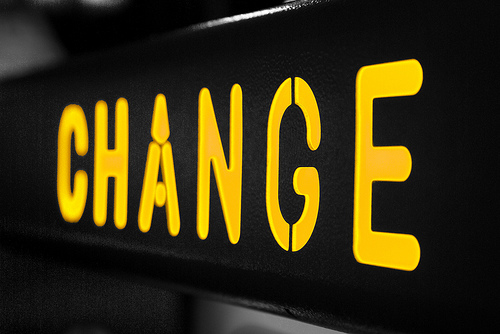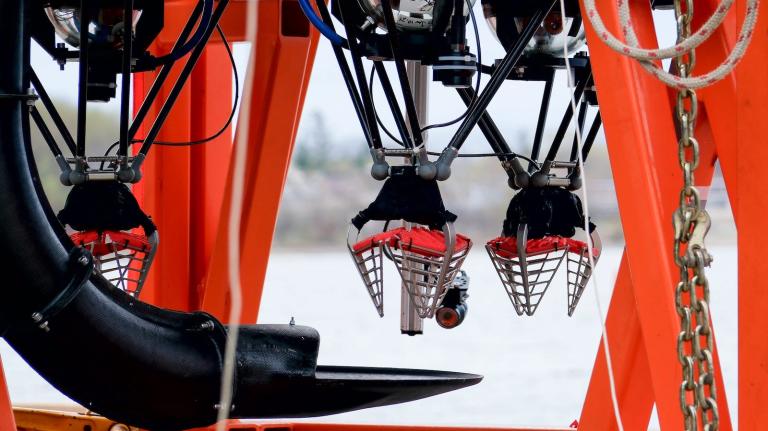 Information alone does not motivate behavior. Photo: David ReeseThere’s always been an obsession among climate hawks with polls that measure public acceptance of climate change science. This drives them absolutely batty.
Information alone does not motivate behavior. Photo: David ReeseThere’s always been an obsession among climate hawks with polls that measure public acceptance of climate change science. This drives them absolutely batty.
An enormous amount of attention has focused on this metric — polls, surveys, studies, punditry, and endless elite hand-wringing. The often unstated assumption hiding behind the discussion is that getting people to say they believe in climate change is the top priority for everyone who wants progress on this issue. That’s Step 1. If only we could get to Step 2!
Why should getting people to acknowledge the problem be the first step? Well, intuitively it seems like belief is a precondition to action. People won’t do anything until they believe, right? When I asked Al Gore in 2006 why his movie was so light on solutions, he stated the view thusly:
In the United States of America, unfortunately we still live in a bubble of unreality. And the Category 5 denial is an enormous obstacle to any discussion of solutions. Nobody is interested in solutions if they don’t think there’s a problem. Given that starting point, I believe it is appropriate to have an over-representation of factual presentations on how dangerous it is, as a predicate for opening up the audience to listen to what the solutions are, and how hopeful it is that we are going to solve this crisis.
Over time that mix will change. As the country comes to more accept the reality of the crisis, there’s going to be much more receptivity to a full-blown discussion of the solutions.
The right wing had a field day misinterpreting that awkward “over-representation of factual presentations” phrase, but his point is clear enough. You gotta make people believe in the problem before they’ll be motivated to act on solutions. Belief is a “predicate” of action.
Problem is, Gore is wrong. Hearing about the problem does not lead to action. As a number of studies and surveys have shown before and since, presenting people with the climate crisis in all its scope and urgency can just as easily shut them down or scare them away as motivate them to behave differently. (See Matt Nisbet for more on this.) Fear alone does not motivate action.
I worry, though, that people have learned the wrong lessons from Gore’s mistake. Some have concluded that the solution is to stop being scary and instead be cool, calm, and reasonable. “Persuade, Don’t Scare, to Create a Climate Change Believer,” goes the Reuters headline. The key is still to present information, just not in a way that’s so, you know, inconvenient.
Another is to say that we should stop talking about climate change at all. It’s so unpleasant and … partisan. [When you hear that word, you have to imagine the entire Beltway center-left cognoscenti crinkling their noses like someone farted in the elevator.] Instead we should focus on clean energy and national security and green jobs other bipar… no, post-partisan solutions. That way we can all just get along.
Both those responses play to the left’s seemingly adamantine determination to blame everything on itself, hold itself to standards of discourse alien to its opponents, and generally bring butter knives to gun fights. But both are wrongheaded. A smarter response comes in two parts:
First, remember that people do not know themselves. That is to say, their self-reports on what influences them, what motivates them, how they make decisions, what they will do in the future — they are not reliable. People often have no idea why they do the things they do, or what would induce them to change what they do. They are very frequently wrong about such things, as about a million psych experiments have shown. Just as we are often mysteries to one another, we are often mysteries to ourselves.
If poll answers aren’t reliable reports about the inner states of respondents, what are they? This is the second part: It’s better to see poll and survey results as social evidence. A poll is itself a kind of record of social behaviors. Answering a poll question is an act, not a revelation.
Say the question is, “Do you believe that climate change is being caused by human activity?” and someone answers, “No, climate change is part of a natural cycle.” For the vast bulk of respondents, that shouldn’t be read as, “Here’s what I’ve concluded based on reasoning through the evidence.” Rather, it’s, “This is what people like me say.” Or perhaps, “The person I see myself as is the kind of person who would say this.” He is performing an act of self-reinforcement, which is essentially a social act, even if he’s alone in the room.
In this light, the perpetual quest to increase the numbers on those polls is not a matter of trying to change people’s internal states, it’s a matter of trying to change their poll-answering behavior. That turns out to be a very, very different way of approaching the problem. When we think about changing internal states, we think about education and persuasion — i.e., we think about putting more information into the internal process, to make it come out correctly. But when we think about changing behavior, we remember that information alone is inert. This is a robust finding consistent over 40 years of social science: information alone does not motivate behavior.
What does motivate behavior change? Well, here it gets a little sticky. As I noted last week, there’s no sweeping, 40,000-foot “message” that will do it. Changing a behavior requires understanding, in a fine-grained way, the barriers and benefits. It requires changing people’s circumstances in smart ways and carefully measuring the results. If you want to know how to change behavior, don’t read a bunch of polls about the messages that make people say positive things to pollsters; read a report like this one from ACEEE, which looks at which behavioral programs around energy efficiency have worked, i.e., demonstrated tangible, consistent results.
Remember, answering a poll is a way of asserting identity. Beliefs tend to be reverse engineered, as it were: People tend to construct an identity around what they (and their tribe) do. That suggests that they will only construct a different identity when they start doing different things.
So imagine the same guy who rejected human-caused climate change in the poll. Imagine that bike riding were made convenient and useful enough that he started doing it. Imagine that his neighbors started getting solar panels, to the point that he felt pressured to do it, and he became a power producer. Imagine he’s in the military and his platoon started insulating their tents and carrying solar water purifiers.
Next thing you know, he’s a guy who uses solar power and rides a bike. His behavior has changed, so he’s telling a different story about himself. That new story, that new identity — the guy who rides a bike and uses solar power — is much more likely to incorporate climate change concern than the previous one.
In other words, Gore may have had it exactly backwards. Belief doesn’t come first; action comes first. Changing people’s behavior —
in small, incremental, but additive ways — is the best way to open their minds to the science. It all comes down to change on the ground. Climate hawks need to get smart about driving behavior change wherever they can. Those behavior changes will pull changes in consciousness in their wake.




